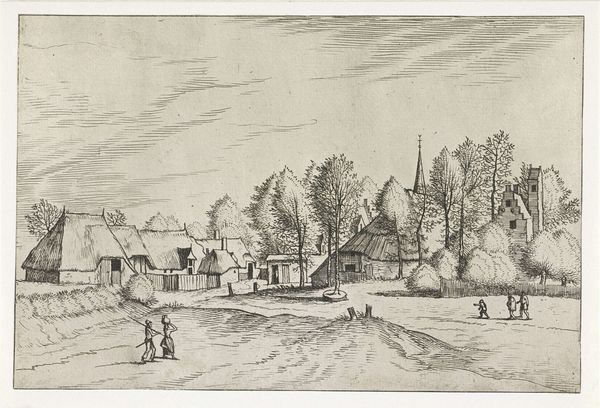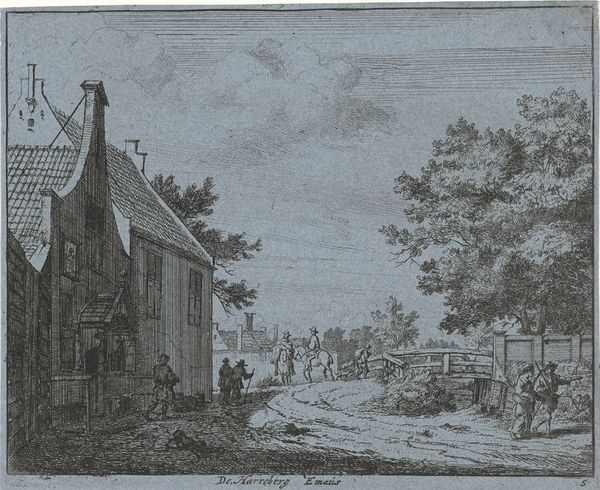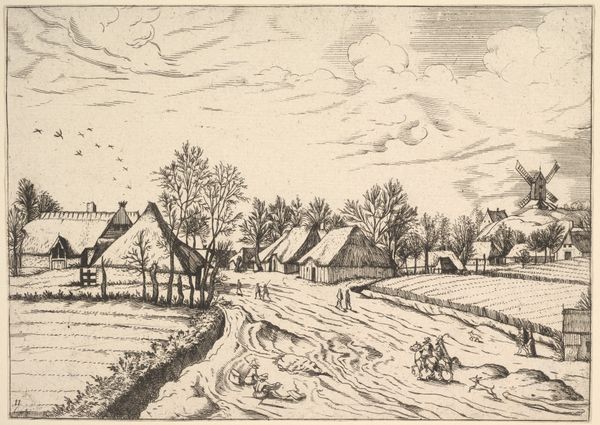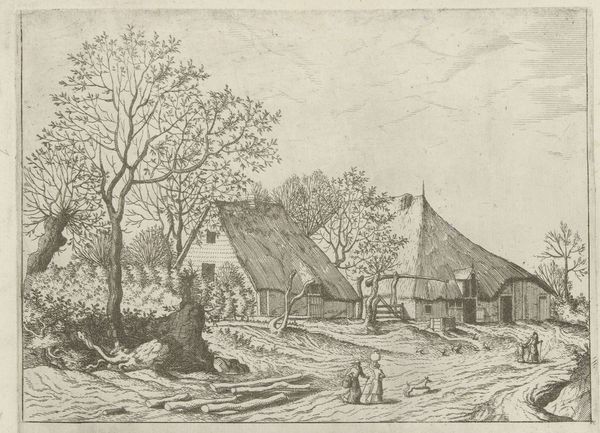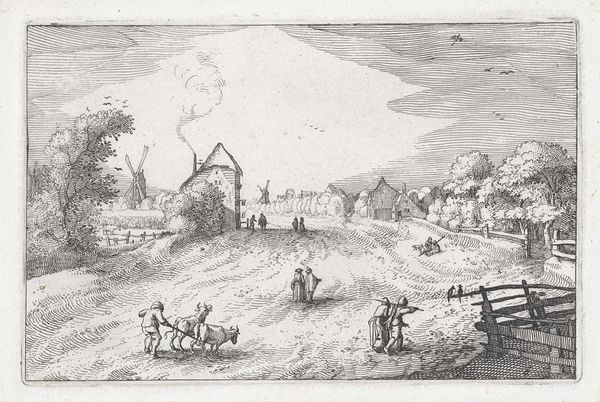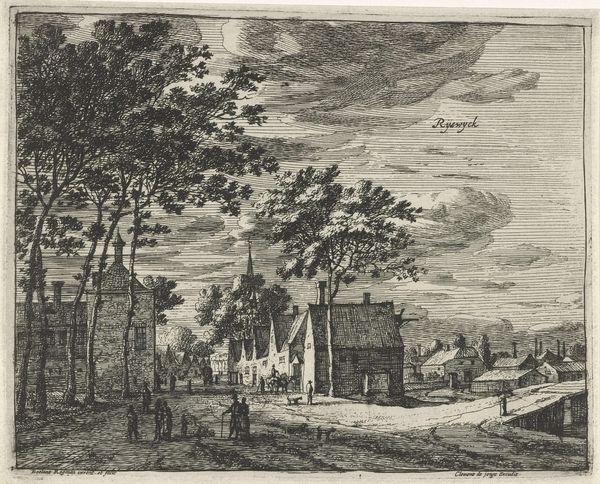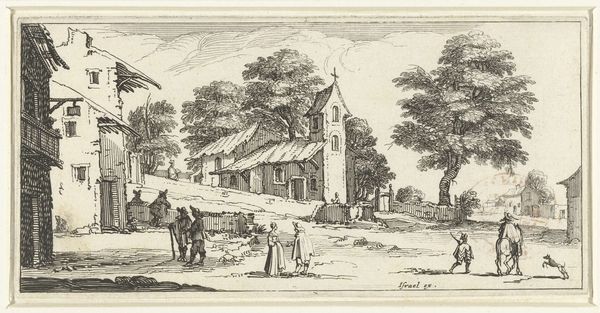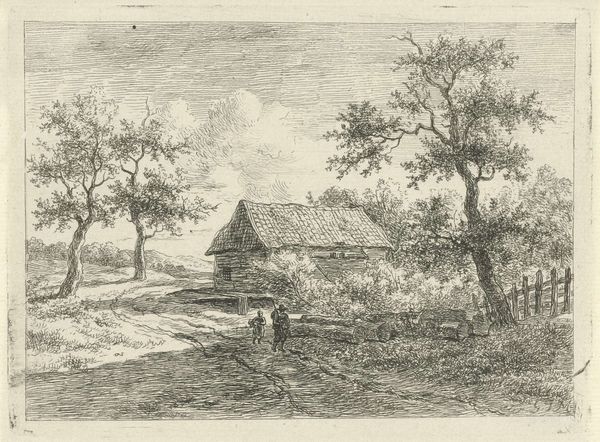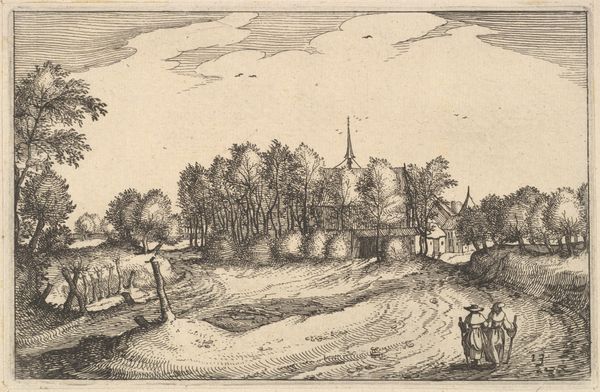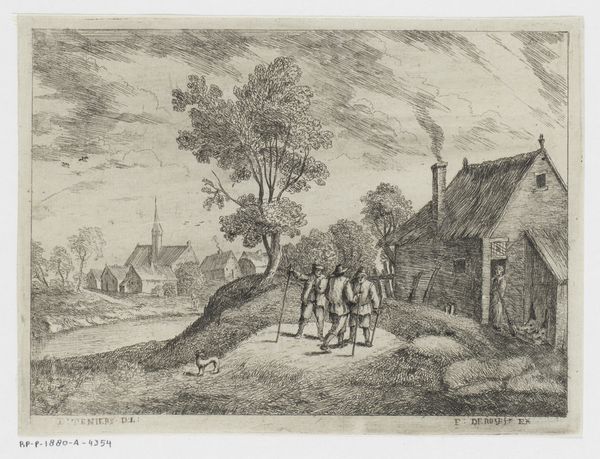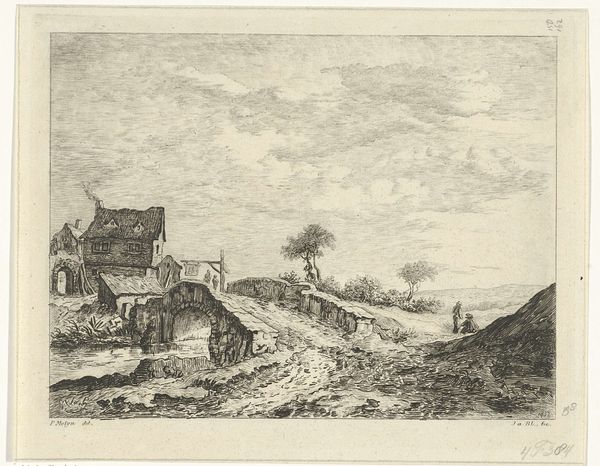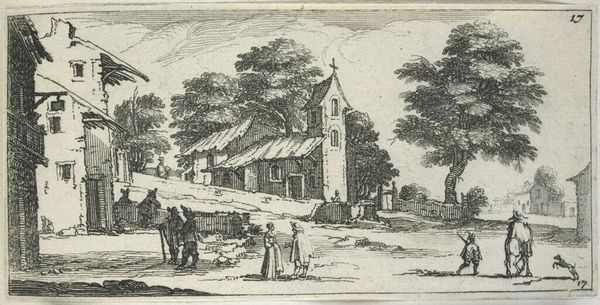
print, engraving
#
dutch-golden-age
# print
#
pen sketch
#
landscape
#
figuration
#
genre-painting
#
engraving
Dimensions: height 103 mm, width 158 mm
Copyright: Rijks Museum: Open Domain
Editor: This is Claes Jansz. Visscher's "Potjes herberg", made sometime between 1612 and 1652. It's an engraving, depicting what appears to be a Dutch landscape scene. The fine lines create so much detail. What's striking is how everyone seems to be involved in some kind of work, whether it's harvesting crops or hauling goods. What do you see in this piece, Professor? Curator: I'm drawn to the material processes evident here. This isn't just a picturesque landscape; it’s a document of labor and production. Visscher’s engraving captures the way people interacted with their environment and how essential activities are displayed. Consider the process of creating an engraving. What labor was required to build this scene? What’s the role of agriculture and the building and use of an Inn in a growing society? Editor: So, it’s less about the idyllic scene and more about... the everyday grind? Curator: Exactly. We see the materiality of daily life – the inn itself, constructed from locally sourced materials; the crops being harvested. Even the act of printing—etching and printing, disseminating these images widely—reflects material and social transformation. This is an era where images were commodities, and this image speaks volumes about consumption. Editor: It’s amazing to consider the act of producing images and disseminating images, as a parallel industry. And now, the Rijksmuseum holds it! It adds another layer to it. Curator: Precisely! The artwork becomes embedded in the economic relationships that produced and circulated it, which shifts our appreciation. Editor: I hadn’t considered that interplay before. Thank you for pointing that out! Curator: And thank you for engaging with this piece, It’s rewarding to discuss and see this piece through your perspective, highlighting different production processes.
Comments
No comments
Be the first to comment and join the conversation on the ultimate creative platform.
